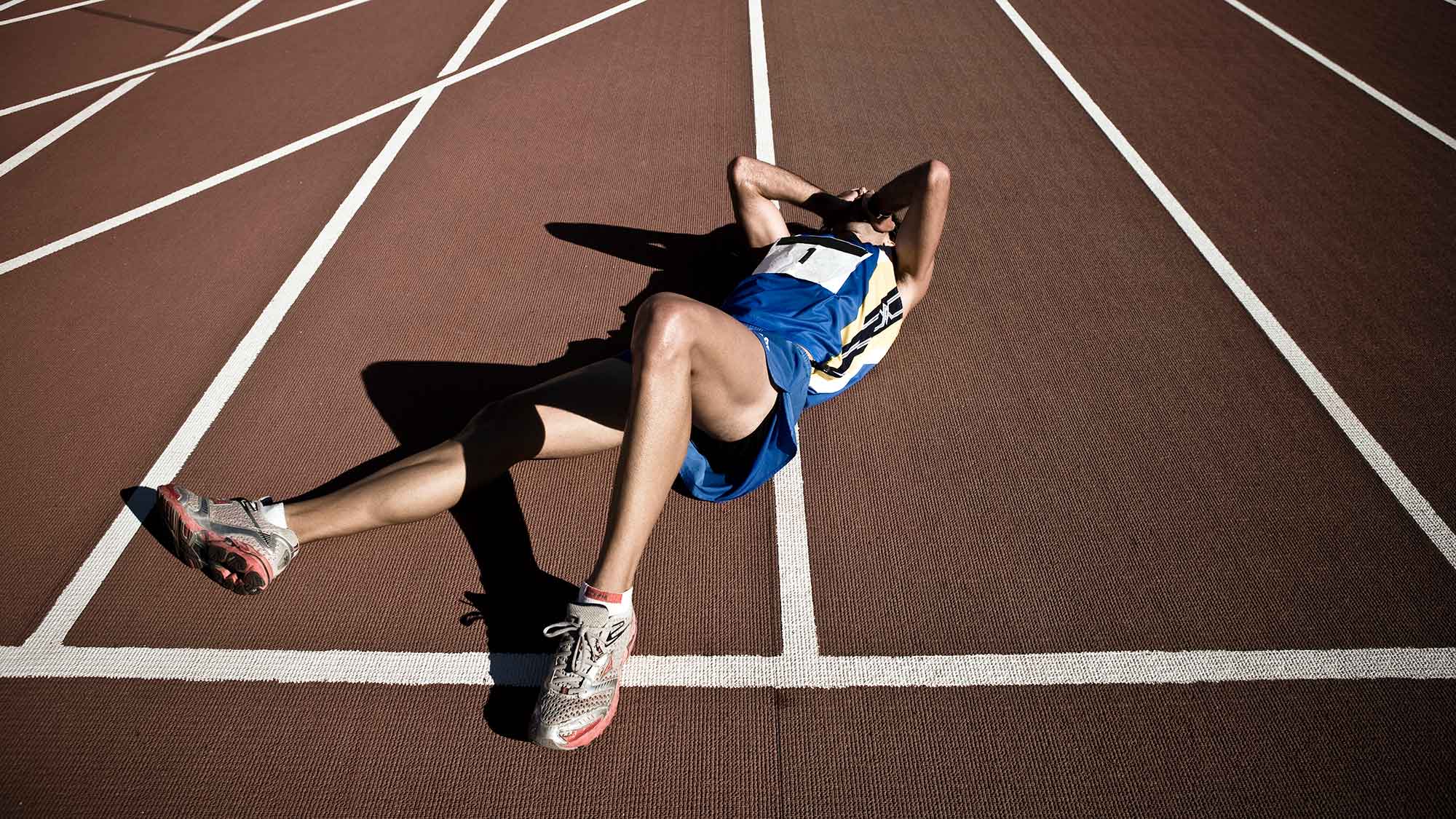
Athletes can develop two more types of anemia
-
Acute anemia, with a sudden onset and a reduction in hemoglobin concentration and hematocrit due to an extreme increase of the physiological amount of intravascular hemolysis. This phenomenon causes a release of free hemoglobin that can result in hemoglobinuria.
-
Anemia with a gradual onset, which starts with a negative iron balance and low serum iron levels, which eventually can develop into iron deficiency anemia.
Athletes tend to have lower hemoglobin concentrations than sedentary counterparts; which generally occurs in the early phase of training. This has been called sports anemia. It occurs when trained athletes experience low hematocrit and ferritin levels. Also, disproportionate large expansion in plasma volume in sports cause dilutional anemia. Sports anemia is a false anemia and a beneficial adaptation to aerobic exercise, caused by an expanded plasma volume that dilutes red blood cells (RBCs). Athletes, however, can also develop true anemia, most commonly caused by iron deficiency.
Sports anemia is a term applied to three different conditions
-
Hemodilution
-
iron deficiency anemia
-
foot-strike anemia
Females, children in growth age, vegetarians, endurance athletes are at high risk of sports anemia.
Sports anemia goes away by itself even with continued training; while, true anemia does not.
Sports anemia Causes
-
Plasma volume expansion
-
Reduced hemoglobin synthesis
-
Increased destruction of RBCs
Sports anemia can also be caused by an inadequate protein intake especially in the early stages of training.
Sports anemia Risk factors
-
A diet that is low in iron, protein, vitamin C, vitamin B12 and/or folic acid
-
Very intense training, especially at the outset of an exercise program
-
Poor iron absorption
-
Loss of iron through sweat
-
Gastrointestinal blood loss
-
Destruction of RBCs
Sports anemia Symptoms
Athletes with iron deficiency anemia have some symptoms such as:
-
Diminished athletic performance
-
Palpitation
-
Dyspnea
-
Fatigue
-
Weakness
Symptoms of sports anemia
-
Sometimes with no signs and symptoms
-
Mild fatigue
Sports anemia Evaluation
Diagnosis is performed through taking medical history and physical exam. Lab tests may be ordered, and are particularly important in assessing iron stores in the body.
These tests include the level of hemoglobin, hematocrit, ferritin and iron.
Routine screening for iron deficiency and iron deficiency anemia in female athletes and male endurance athletes is often recommended. An athlete with low ferritin and iron levels, and normal hemoglobin and hematocrit, is considered to have iron deficiency, but not iron deficiency anemia. If the athlete also has low hemoglobin and hematocrit levels, then he or she has iron deficiency anemia.
Sports anemia Treatment
Treatment is designed to prevent the loss of iron stores through a balanced food intake or iron supplements and to prevent true anemia. The effectiveness of treatment is judged by clinical and laboratory criteria. The only treatment for true anemia is iron supplementation, often with iron pills prescribed by a physician.
Diet Therapy in Sports anemia
The best way to fight with sports anemia is prevention. It can be prevented through proper nutrition that includes all the necessary ingredients, vitamins and minerals. People who exercise must have a high protein diet with high iron content.
Foods that are good sources of protein and iron are
-
Red meat
-
Poultry
-
Fish
-
Eggs
Special attention must be given to high intakes of tea and coffee; because they can decrease iron absorption. Also, wine and vinegar can reduce iron absorption; so it is better not to combine them with meals. Eat foods or beverages high in vitamin C (like orange juice) in combination with an iron rich meal or iron supplements, to enhance iron absorption. The iron in meat is better absorbed than non-heme iron found in vegetables, fruit, beans and whole grains. Individuals, who have high cholesterol levels or are vegetarian, can consume iron-fortified cereals and iron-rich foods like spinach, broccoli, beans, lentils and tomato juice.




